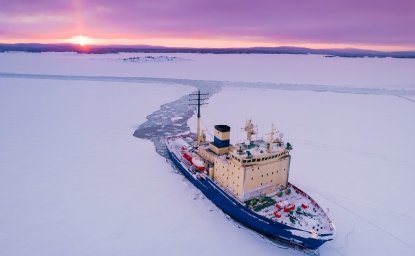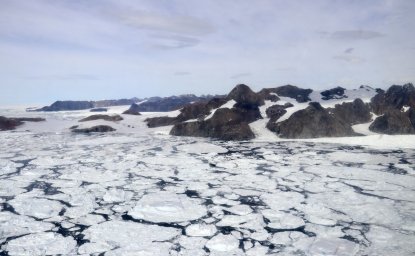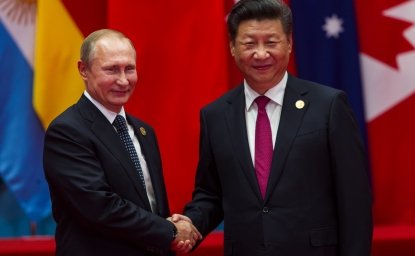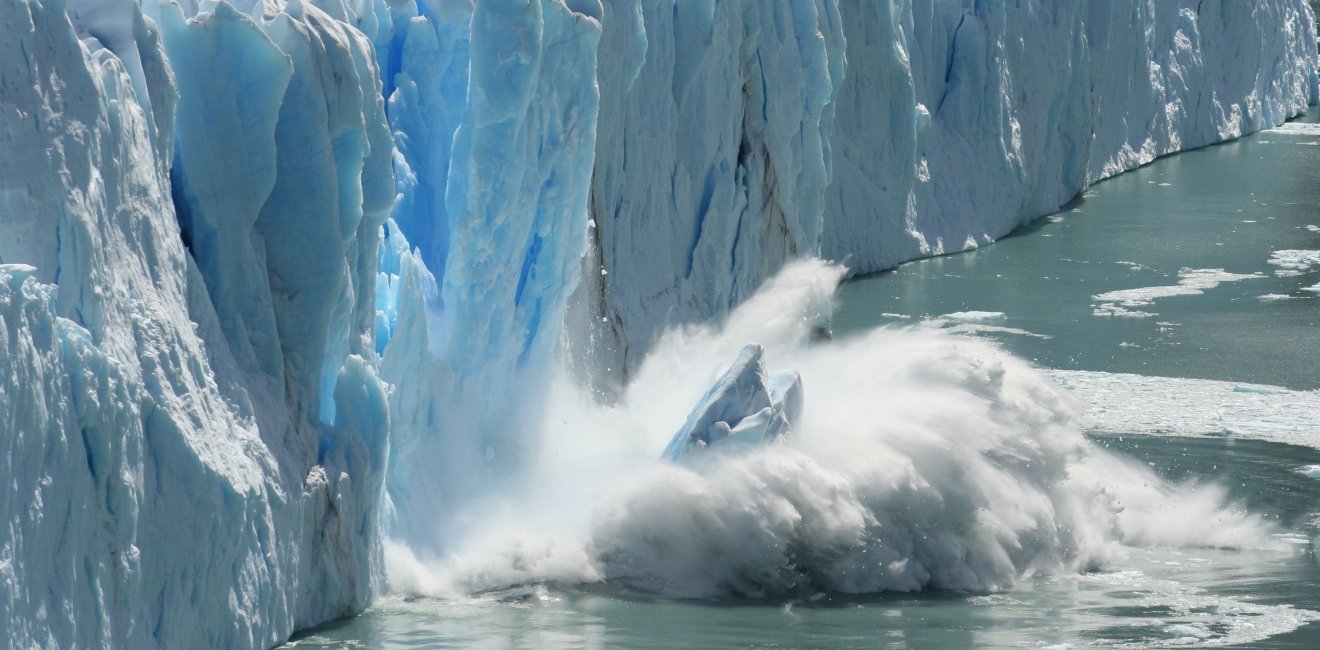Critical Challenge for the US | Climate Change Continues Rapid, Cascading Change at Both Poles
The Arctic is warming about four times faster than the global average, and climate measurements continue to show the rapid pace of change that may be approaching or passing critical tipping points. On Svalbard, Norway’s high Arctic archipelago, winter temperatures have already risen by more than seven degrees Celsius since 1971. Similarly, over the same period, the Antarctic Peninsula has warmed more than five degrees Celsius. Extreme warming is triggering cascading disruptions: in addition to warming rapidly, the Arctic and Southern Oceans are becoming more acidic as carbon dioxide is absorbed by seawater.
While progress toward limiting emissions was achieved in 2021, the global community remains far outside trajectories that will limit warming to 1.5 degrees Celsius. Commitments made through the Paris Agreement process are still below the level needed to avoid worst-case scenarios. As the ripple effects of the war in Ukraine and its impacts on global energy markets continue to spread, 2023 will be a critical year for bending emissions trajectories. Of consequence is an influx of methane into the atmosphere, from both natural and anthropogenic sources. Both the Arctic and Antarctic regions are changing rapidly, and governmental policies are struggling to keep up.

3 Things to Watch
Arctic Cooperation Amidst War in Ukraine
War in Ukraine caused a crisis in Arctic cooperation in 2022, as the Arctic Council, the regional inter-governmental forum composed of the eight Arctic states, was rocked by political fallout. Russia holds the chair of the Arctic Council until May 2023, and the question of how the Russian Chairship will end, and then be passed to Norway, remains open. Disruption to the Arctic Eight construct could have ripple effects for regional decision-making. Arctic Indigenous peoples and non-Arctic states are also experiencing uncertainty during the Arctic Council’s pause.
Strengthening NATO Alliance
Russia’s further invasion of Ukraine in February 2022 sparked a remarkable and rapid shift in Finland and Sweden’s positions with NATO. Previously, the two Nordic countries had a firm preference for remaining NATO Enhanced Opportunity Partners. However, in a demonstration of the cataclysmic shift in threat perception resulting from major war having returned to Europe, both Finland and Sweden are seeking accession to NATO. Both countries bring advanced military capabilities to NATO. Given the close preexisting relationships and regularly exercised interoperability that preceded this move— including in other forums such as Nordic Defense Cooperation (NORDEFCO)—there will likely be a rapid and smooth acceleration of NATO capabilities in the Nordic area.
Arctic military capabilities will also increase in North America. In Alaska, the newly-redesignated Army 11th Airborne Division will continue to develop its Arctic warfighting capabilities. In 2022, the Canadian government announced nearly $5 billion to modernize and upgrade early warning systems, including NORAD. Canada also announced the intent to establish a NATO Center of Excellence on Climate Change and Security, which is expected to open in Montreal in 2023. Many of the Arctic military initiatives announced in 2022 will make important progress toward implementation in 2023, and attuned observers will be watching to see if tangible action follows.
Economic Diversification in Alaska
Also on for Alaska in 2023 is important progress on economic diversification. Ongoing churn in energy markets and oil prices means that diversification of the state’s economy is important for buffering market volatility, and anticipating future energy trends. At the same time, accelerating climate change threatens food security as well as Alaska’s multi-billion dollar fisheries sector. There are intriguing regenerative ocean farming efforts being led by Alaska Natives, and organizations such as Native Conservancy.
The long-anticipated Port of Nome expansions project is expected to begin in earnest in early 2023. The port project received $250 million in federal funds through the Biden administration’s signature infrastructure act, as well as further support from the annual water resources administration act, and another $175 million in state funding.
Also to watch in Alaska: progress by the GraphiteOne corporation, which seeks to develop an open-pit graphite mine about 37 miles north of Nome in the Seward Peninsula. The project pre-feasibility study released in 2021 projected that the mine would produce 22.5 million tons of graphite over 23 years, to be processed in a battery manufacturing plant in Washington. The GraphiteOne project bills itself as a crucial step in securing critical minerals supply chains for US national security and comes amid heightened tensions with China over chips and supply chains. Will this project move to the permitting stage in 2023?
Contributors



Former Acting Deputy Assistant Secretary for Oceans and Fisheries and Director for Ocean and Polar Affairs, US Department of State

Polar Institute
Since its inception in 2017, the Polar Institute has become a premier forum for discussion and policy analysis of Arctic and Antarctic issues, and is known in Washington, DC and elsewhere as the Arctic Public Square. The Institute holistically studies the central policy issues facing these regions—with an emphasis on Arctic governance, climate change, economic development, scientific research, security, and Indigenous communities—and communicates trusted analysis to policymakers and other stakeholders. Read more

Explore More
Browse Insights & Analysis
US, Canada, and Finland Unite to Build Advanced Arctic Icebreakers

Sea Ice in 2024 – The New Abnormal

China and Russia: Quietly Going Steady?

